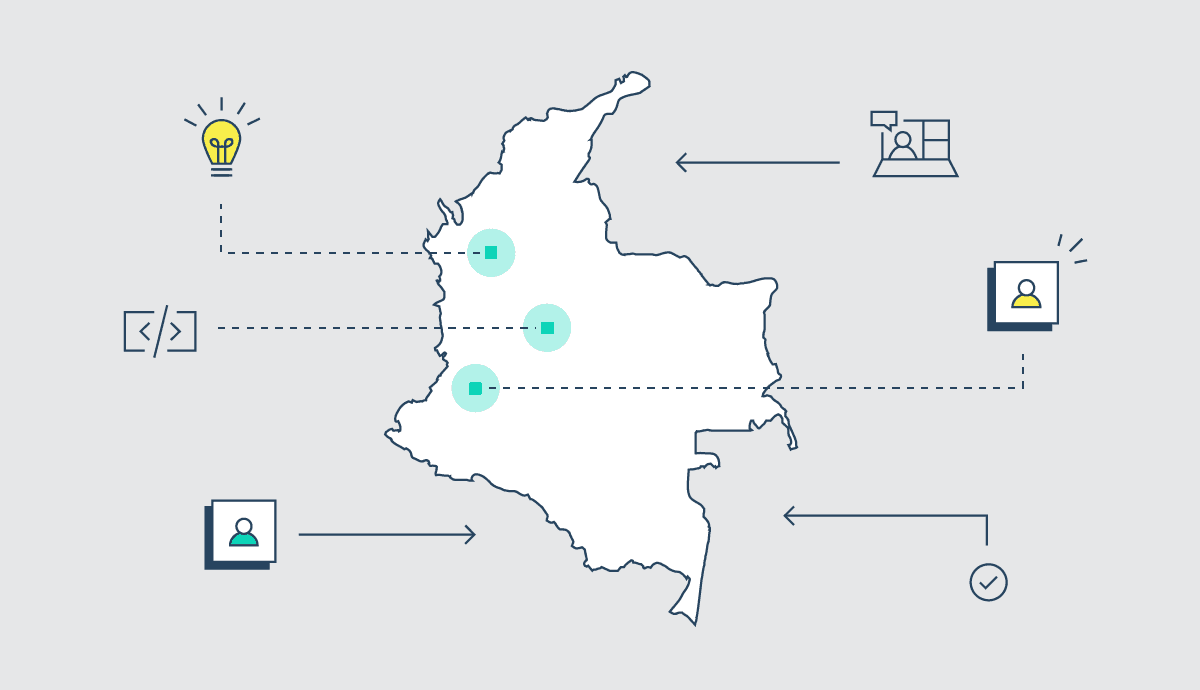
Hiring + recruiting | Blog Post
Nearshore vs. Offshore Development: Which Is Right for You?
Todd Adams
Share this post
Nearshore development is experiencing a surge, with tech talent booming across Latin America and other regions. Mexico, for example, was home to 220,000 software developers in 2023, and that number is growing.
Of course, just because nearshore talent is having a moment doesn’t mean offshore developers have nothing to offer. Global talent can be a big boost to your development team, offering advantages such as accelerated time to market, specialized skills, and lower costs. That’s why international hiring has become part of the standard playbook for modern engineering teams.
But when it comes down to nearshore vs offshore development services, which is better for your team? Let’s look at the biggest factors to consider when choosing between them.
What Is Nearshore Development vs Offshore Development?
Before we get into the differences between nearshore vs offshore development, let’s first explain onshore development. Onshoring is software development in your home country. While convenient, this is typically the most costly model. It also limits your access to niche skill sets and diverse perspectives.
Nearshore development, on the other hand, refers to developers or software development services in neighboring or nearby countries that share a similar time zone, culture, and language.
For U.S. companies, some of the leading countries for nearshore development are:
- Mexico
- Canada
- Costa Rica
- Colombia
- Brazil
- Argentina
Similarly, offshore development refers to developers or software development services in more distant countries, creating bigger gaps between time zones and shared cultures. For U.S. companies, typical countries for offshore development are:
Communication and Time Zone Alignment
When you choose offshore development, the communication and time zone differences can be significant barriers to effective collaboration.
For example, if a company in the United States partners with developers in India, there could be as much as a 12-hour time difference. This means that the offshore team would be starting work just as the U.S. team is finishing for the day, and there may only be a few (if any) hours of overlap each day for communication and collaboration. This can make it challenging to have real-time conversations or quickly address issues that arise.
However, offshore developers can be very effective in facilitating a global “follow the sun” style development model. This means a 24/7 operation because when one team ends its workday, the other takes over, so the project is never at a standstill. For companies where full-time coverage is critical, offshore developers can be an important part of your team infrastructure.
Cultural differences can also impact communication and collaboration. For example, language barriers or different work styles may lead to misunderstandings or delays in communication.
On the other hand, with nearshore development, the communication and time zone differences are typically much smaller. For example, a company in the United States that outsources software development to a company in Mexico or Canada may only have a 1-2 hour time difference. This allows for more real-time collaboration and faster response times to issues or questions that arise. For startups still looking to find product-market fit or wanting to iterate quickly, time zone alignment can be critical.
English proficiency is also higher in nearshore countries than in offshore countries. Nearshore countries generally score much higher on English proficiency tests than offshore countries. There tend to be greater cultural similarities as well, which means less confusion and fewer conflicts.
Differences in Costs Between Nearshore vs Offshore Developers
Both nearshore and offshore development offer cost savings over domestic hiring. Across the board, hiring abroad will be better for your budget than hiring domestically.
The costs of offshore and nearshore development vary depending on factors such as the location of the outsourcing company, the level of expertise required, and the complexity of the project. You can see 25-40% savings for hiring nearshore developers, whereas offshore developers can typically save you between 50-70% due to lower costs of living. Those numbers have been compressed in recent years as the global workforce and economy have shifted.
Learn more about global software engineer salaries with our Remote Software Engineer Salaries tool.
Talent Quality and Skill Level
There are no studies that suggest that one group of developers is inherently better or worse than the other. The quality and skill level of software developers depend on a variety of factors, including their education, experience, training, and individual abilities. There are highly skilled and talented developers in both nearshore and offshore locations.
It’s worth noting that the quality of work and skill level can vary significantly between locations and talent regions because pockets of talent and expertise tend to concentrate. For instance, Guadalajara, Mexico, has become a hot spot for tech companies because the government invested in the city’s technology infrastructure, it’s close to the US, and it has great universities. It has become a center for investment in both startups and tech talent.
Nearshore vs Offshore Development: Which Should You Choose?
While both nearshore and offshore models offer benefits, the advantages you gain in collaboration and communication from nearshore team members tend to outweigh the slight cost savings you gain from offshore development. For teams looking to build mission-critical products, collaboration is key, and nearshore teams offer the best options there.
However, offshore teams do offer some advantages, such as “follow the sun” coverage.
Learn more about our global hiring hubs in Canada, Latin America, and Europe, or contact our team to get even more info!
FAQ
What’s the main difference between nearshore vs offshore development?
Both nearshore and offshore development involve working with software engineers or full teams from external countries. However, the main difference between the two models is that nearshore developers are in neighboring or nearby countries, while offshore developers are in distant countries with significant time zone differences.
Where are nearshore software development locations for the United States?
Nearshore development locations for the United States are largely concentrated in Latin America. Countries with large populations of skilled engineers include Mexico, Costa Rica, Colombia, Brazil, and Argentina. Canada is another destination with high-quality developers.
What are the advantages of nearshore vs offshore development?
Nearshore development offers significant advantages over offshore development, such as time zone alignment, strong English proficiency, cultural compatibility, and niche skills.
What are the advantages of offshore vs nearshore software development?
Offshore development offers advantages like cost savings and access to a huge, global talent pool over nearshore development. However, nearshore development is typically cost-effective as well, and it provides benefits like cultural compatibility and time zone alignment, as well as access to a larger pool of developers.


